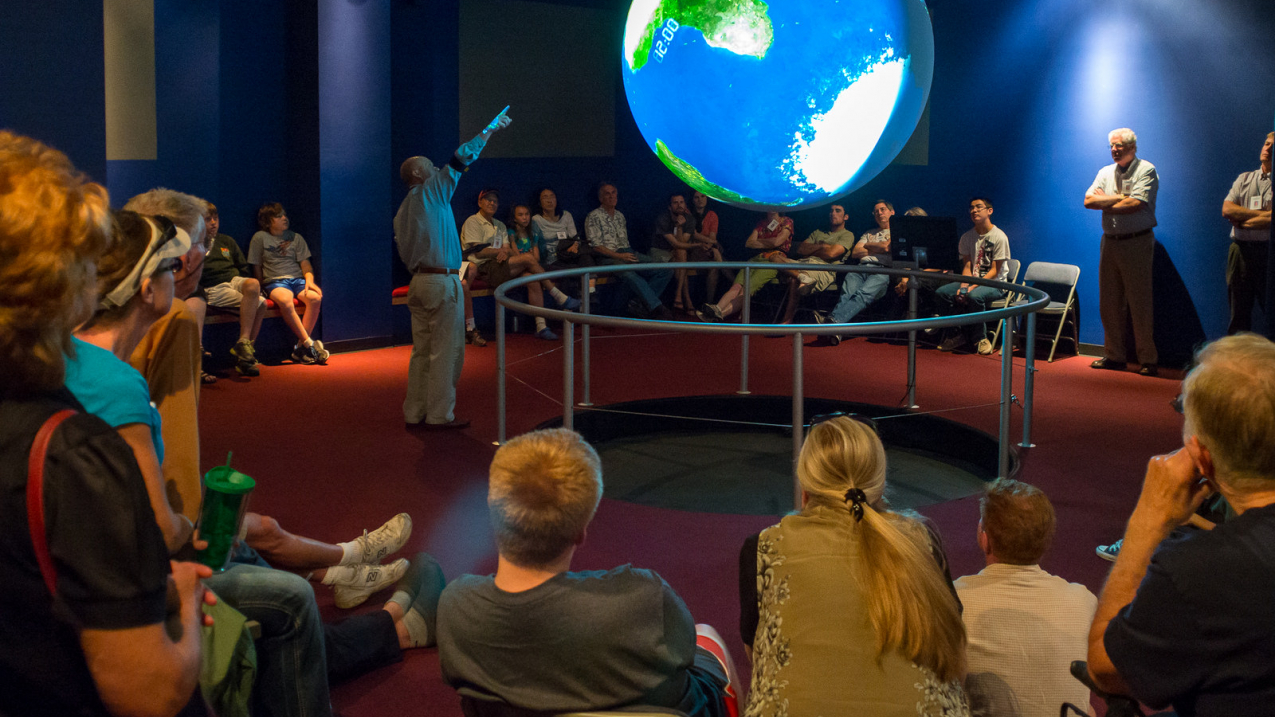3-D educational tool has inspired museum-goers and lab visitors for nearly a decade
A glowing six-foot diameter sphere, suspended from the ceiling of NOAA headquarters in Silver Spring, Maryland, is the 100th Science On a Sphere® installed around the world. The 3-D display system, which was unveiled today, illuminates awe-inspiring animations of planet Earth and is used by educators, curators and scientists alike to explore global environmental data, such as swirling hurricanes, clouds and ocean currents.

Science On a Sphere® (SOS) is a global display system that uses computers and video projectors to display planetary data onto a six-foot diameter sphere, a giant animated globe. Developed by NOAA researchers, these globes are now in more than 100 museums and science institutions around the world. (Image credit: Will von Dauster/NOAA)


